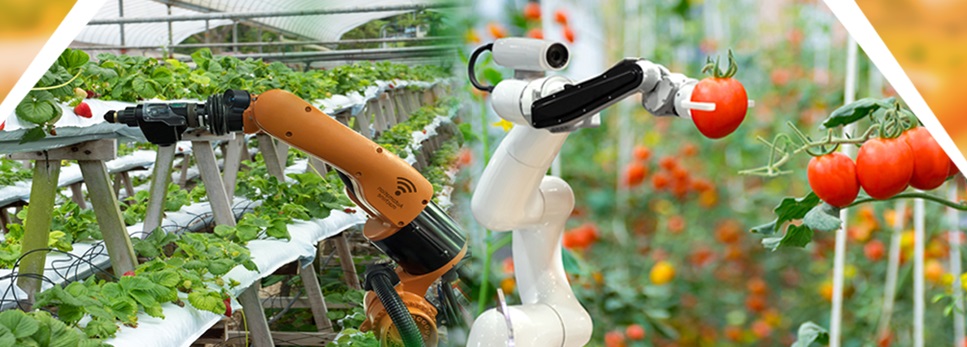Robots. What is the image that comes to our minds when we first think of this word? For most of us born in the final decades of the 20th century, the visual representation is either of gun totting terminators rampaging through our cities, or little scavengers left on a degrading earth by space bound humans.
Very few of us are aware that these pinnacles of human ingenuity and engineering can be used in a sector as traditional as agriculture. There are examples of robots; both miniature and large, being deployed for a plethora of activities involved across the farming process. The range of functions performed by these machines are governed by the farm terrain, product type, and the need that automation can fulfill.
Some of the most interesting examples can be seen in farms around Netherlands where the scientists are using a combination of Artificial Intelligence and Data Analytics to equip robots with the ability to differentiate between ripened, semi-ripened, and un-ripened fruits & vegetables. Depending upon the algorithm programmed into it, a robot can pick fruits & vegetables only in a selected stage of ripening and can also differentiate between varying characteristics. One such example is the ‘Sweeper’, which can pick ripened bell-peppers in a matter of seconds and can work continuously for 24 hours unlike its human counterparts. This has helped the farmers optimize their harvest and realize better prices for the goods.
Across the Atlantic, on the west coast of United States, another robot is using specialized sensors, cameras, and machine learning tools equipped to suck the fruit right off the branch through a vacuum arm. The fruit is transported and stored without any human involvement, which in addition to being faster and precise, also avoids any risk of contamination. Such robots are important for a state like Washington that produces 58% of total apples in the US and constantly faces shortage of skilled horticultural labour.
Similar research in Israel has enabled precise application of pesticides to only the affected region of a plant; spread nutrient solution to a distressed piece of the farm; and even spray inputs through an unmanned aerial vehicle covering much larger tracts of lands than possible on foot by human workers. Some of these drones can carry a payload as large as 500 kilograms and can cover several hundred acres of farmland in a day, a task that their human counterparts would accomplish in almost a week. Such interventions have resulted in higher efficiencies of inputs used, checked the unsystematic application of chemical inputs, in turn improving the soil quality.
While several data oriented digital solutions have made their way to the farms at home in India, the adoption of robotics & automation-oriented solutions remains at a nascent stage. There exists technology for targeted harvesting of a sensitive crop such as cotton, or a self-driven land preparer-leveler, but the challenge remains in commercialization of such transformative solutions. The reasons for these are several, ranging from unevenness in the geographical conditions, to lack of ecosystem support for such innovations. Despite the challenges, there exists an unquestioned need for use of Robots Indian Agriculture. Some of these intuitive machines have had the sun shine on them, quite literally, but the adoption remains comparatively lower than their digital counterparts. The developed solutions are primarily concentrated in the On-Farm segment of the Agricultural Value Chain while limited innovation is seen in the Harvesting segment. Established industries have seen higher success rates in commercializing a concept and producing a market ready prototype such as the driverless tractor.
The need of the hour is a multi-stakeholder initiative to draw up a roadmap for speedier deployment of robots throughout the agricultural sector in India.
The Agri-Robotics Masterclass by CII’s Food and Agriculture Centre of Excellence is one such initiative. It is attempting to set a precedent by bringing together the brightest experts from across the world to share their insights with the discerning Indian audience that has proven its tech-savviness across the global corridors and shown an enthusiastic appetite for path breaking innovations.



